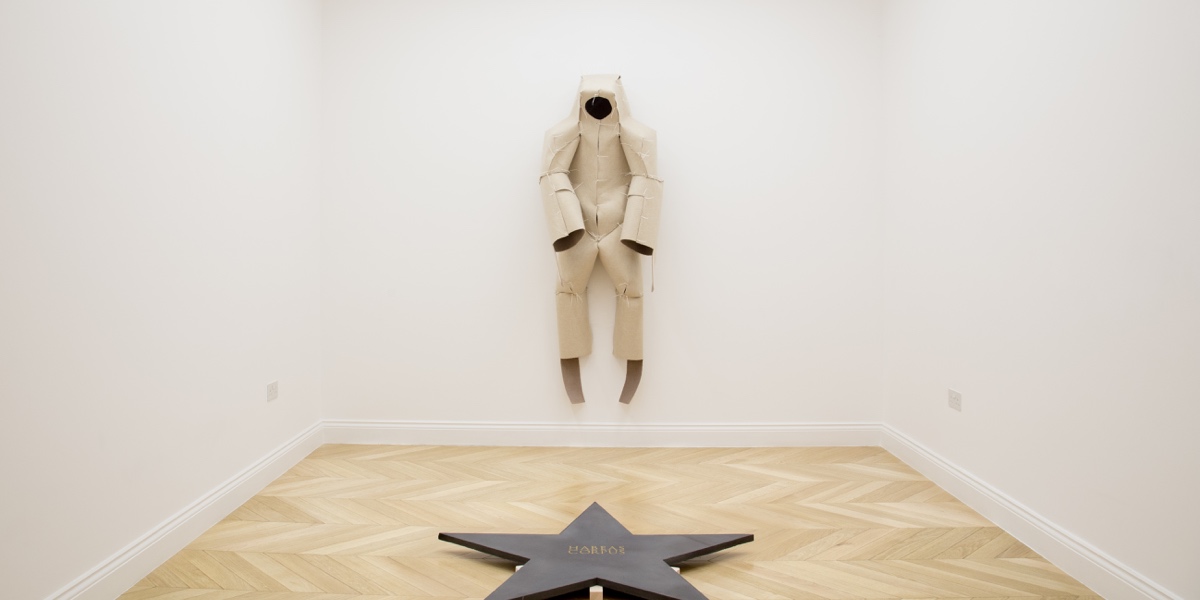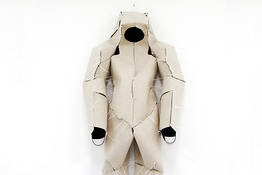Exhibition
Didier Fiúza Faustino: Sweet Dreams are Made of this
6 June - 27 July 2019
Senesi Contemporanea is pleased to present the exhibition Sweet Dreams are Made of This by Didier Fiúza Faustino, in collaboration with Galerie Michel Rein. The exhibition showcases an eclectic range of the artist’s broad field of practice and demonstrates his capability for structural works that disclose a remarkable sense of wider humanity. Faustino initially schooled as an architect but since expanded his practice after developing a curiosity into the field of performative arts. This dichotomy between the corporeal body and the structural control of architecture is a foundational theme in Didier’s work and elaborates itself in to a situational form of art that is acclaimed and displayed in international art collections such as MoMA and Centre Pompidou.
This exhibition presents a uniquely focused selection of the artist’s work, whose career spans the development of architectural structures such as 2001’s widely acclaimed Stairway to heaven in Portugal’s Castelo Branco, architectural interventions such as the XYZ lounge in Ghent’s Zebrastraat Centre, a 360m2 interior design that infused futurism, Kubrickian light technique and abstract furniture into a public space. And a contemporary art practice that explores the body and its relation to space, crafting situations that encompass ideas of democracy, humanity and existence. Most recently, he has exhibited work at the Biennale d’Architecture et de Paysage titled Lampedusa, previously exhibited at the MAXXI in Rome in 2015.
The themes in the works displayed range from the culture of democracy and civil unrest to the sanctity of home and the nature of man. Sculptural works such as Eclat 2.0 and My own private ... are re-appropriations of the forms of tools, using the architectural sensibilities of violence and conflict. Faustino ponders the memory of forms, although constructed from patterned board, how does the shape of curled fist or a loaded rifle, influence our emotive state or how does a sickle and hammer inform our perspective of the aforementioned objects. The presentation of these three-dimensional objects in different scales, colours and textures creates a situation in which the viewer can interrogate our relationship with shape on it’s most disheveled plain. Eclat 2.0 for example is a micro rendition of a similar public sculpture installation titled this is not a love song (2) in which the cartoonish shape of an explosion is built up to the size of a public speaking stage, and placed in London’s Bedford Square, in front of the architectural association’s building.
These socio-political situations are also employed by the artist in works such as Home suit Home (2013), in which a carpet, typically a decorative and ornamental fixture, has been carved into a system of blocks, resembling the patterning technique of garment construction, then reassembled using nylon zip ties as a suit of body armour, evoking expeditionary silhouette. In this instance, Faustino has reimagined the human geography of occupation, the interior and exterior collide, inhabiting the form of humanities explorative self image but the material of our ideal points of safety. One is presented with the mounting of this form in the hopes that the examination will produce questions regarding the fallible idea of a home, in the face of the mounting disasters of our time. Ultimately dismantling the relationship between the dualism, perhaps even contradiction, in the nature of our kind, to equivalently and impossibly pursue the stable notions of a home and the primal ambitions of expansion.
Faustino can also be seen to demonstrate this humanitarian economy of materials and forms in the simple but effective work Exist. An understated typography inspired by the exit signs on doors, formed with lines of tape and reading only ‘Exist’. This work is a recurring motif in the artist’s oeuvre and represents the passing of a personal thresholds in his thought process. During his time in Mexico, working on the Democracia Portatil project, the artist expressed the desire to present forms of hope. Facing the effectiveness of his practice in the face of such intense global injustice, Faustino whose capability spans a staffed ideation studio in Paris and development studio in Lisbon, found the answer to this in the simple utilisation of the widely accessible material of tape, but also the most perennial and universally democratic material we have available, language. In times such as ours and among an artistic historical documentation and re-appropriation of protest materials and culture, the most profound act of rebellion is continued in unapologetic existence.
Further interpretive elements can be found in 2009's Hand Architecture, featured in both sculpture and digital print, alighting a recurring theme in Faustino’s work: the vocality of change. The platforms and tools we use to enhance our speech and communicate with the wider world, these works in particular isolate the dual nature of aggressive speech, both in its potential for rebellion and oppression. Traces of these concepts can be found in the Show must go home (2013), that creates typography using a survival blanket and an industrial melamine board in the vein of modern cinema perhaps, visually bolstered by the work Ashes to ashes (2015) a floored star in concrete, ornamented with gold inscription.
Didier Fiúza Faustino, ultimately, negotiates the relationships between our corporeal forms and the environments they engage with. His situational economy is a constant arithmetic between who we are as a moral and civic people and the objects and spaces presented further confirm or contradict this hypothesis. The exhibition Sweet Dreams are Made of This takes this philosophy and applies it to a vast range of Faustino's work from his wide-spanning career, and the mediums it employs, to create a compelling anthology of his ideological positions and the accompanying physical manifestations. From the occupation of justice to the nature of man, these sweet things invite us to interrogate the nuances, objects, and detritus of the world in turbulence so that we may occupy its potential justice.
For all press enquiries, contact:
Hugo L. Bou-Assaf, Carla Schöffel +44 20 74936179, info@senesicontemporanea.co.uk





